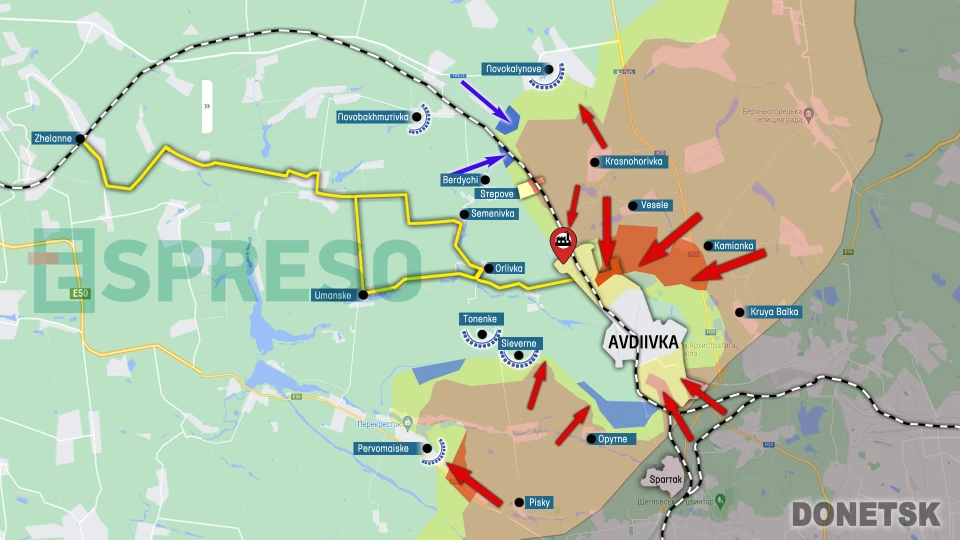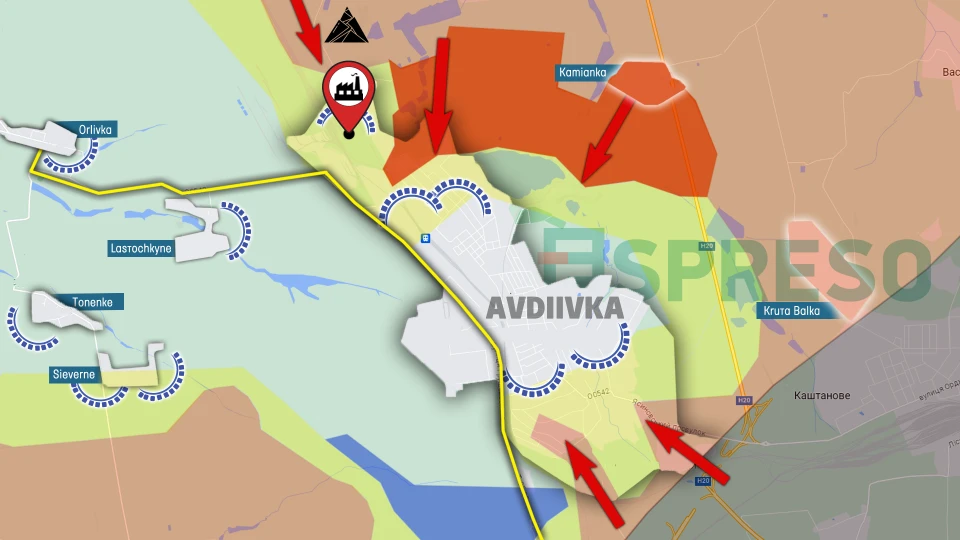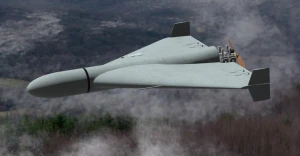
Fortifications on battlefield: between desire and reality. Column by Serhiy Zhurets
General Serhii Naiev, disclosed updates on fortification efforts, highlighting the construction of new defensive lines along the borders with Russia and Belarus
Building fortification structures realities in Ukraine
The Russian army is now trying to take advantage of its superiority in manpower, ammunition, and equipment, and is seeking to push through in certain areas of the front. The fighting is quite intense, with 100 Russian attacks repelled on February 11 alone, signifying a substantial engagement rate. Two-thirds of these clashes took place in Avdiivka and Marinka, and 19 more near Bakhmut.
Of course, when in a defensive position, the importance of having robust fortifications and engineering structures to safeguard Ukrainian defenders becomes evident. This is particularly relevant in the context of Avdiivka, where preparations for new defense lines should be underway, regardless of whether a retreat to these positions becomes necessary or not. The same applies to the Russian offensive in the direction of Chasiv Yar. On February 12, Deep State analysts wrote that the area around Chasiv Yar can be made impregnable. However, the analysts noted, and I quote, "the history of building engineering fortifications and preparing for defense once again leaves much to be desired." This is a matter of concern. What is the reason for this? What is the situation with our fortifications?
For clarity, a few details: President of Ukraine Volodymyr Zelenskyy first emphasized the necessity for fortifications on November 30, 2023, after a meeting in his capacity as the Supreme Commander-in-Chief. During this announcement, virtually all regions were mentioned, indicating a widespread need for fortifications across the country. Subsequently, quite significant funds were allocated for this purpose. In January 2024, the government announced that UAH 17.5 billion would be allocated for the construction of both engineering and fortification structures. And an additional UAH 2.5 billion was allocated, as communicated to the relevant departments and regional state administrations.
The commander of Ukrainian Armed Forces, General Serhii Naiev, who has now been dismissed, publicly reported on the progress of the fortifications, saying that from June 2022 to January 2024, new fortification lines with ditches, pillboxes, and new strongholds were built on the border with Russia and Belarus. And that the density of minefields has been increased by as much as 16 times. According to the general, private companies under the guidance of military engineers were involved in the development of the defense lines.
However, there is a downside to this optimistic outlook. Conversations with officials and military personnel revealed that progress is not uniform across all areas, with some regions facing delays. There are a number of reasons that slow it down. What are these reasons? I will name three problems. The first is that a significant amount of time has been spent or is still being spent on coordinating fortification projects at each site, agreeing on estimates for these sites. According to my information, the suggested approach was to adopt standard projects, link them to specific locations, proceed with construction without initial estimates, and then receive funding afterward. However, there is hesitancy to pursue this strategy due to concerns about potential complications with the State Bureau of Investigation in the future. Consequently, private companies are reluctant to secure contracts for fortification installations, while state-owned enterprises lack the necessary capacity.
The second problem pertains to the recruitment of workers. The shortage of personnel, challenging working conditions, and the urgency of the situation create certain expectations regarding salaries. However, there are established standards for labor costs that impose limitations based on these estimates. Consequently, despite the formal availability of funds for these needs, progress in some areas or at specific sites is constrained by the inability to offer higher salaries.
Thirdly, in addition to excavating trenches, installing concrete "dragon's teeth," and burying concrete pillboxes, which constitute fortification efforts, there is a pressing need for proper mine deployment, including anti-tank mines. Under Soviet standards, it was deemed necessary to have 1,000 mines per 1 kilometer. However, current estimates suggest the need for 5-6 times that amount. In the primary areas of the Russian offensive in the north, approximately 500,000 anti-tank mines have already been deployed. Nevertheless, this falls short of the actual requirement, which is approximately 4 million mines. I inquired about the availability of these anti-tank mines, to which the response highlighted a shortage of TM-62 mines, the primary Soviet anti-tank mine. Currently, we do not manufacture these mines, and our stock is limited to fuzes. Therefore, there is a necessity to procure such mines from the foreign market until domestic production capabilities for hexogen or TNT can be established.
All of these challenges are intricately tied to the functioning of the Ukrainian industry. These difficulties represent just a portion of the broader complexities faced in ensuring the safety and protection of soldiers in Ukraine's defense strategy. Hence, emphasis on traditional military support is equally vital alongside the development of new technologies, such as unmanned systems. It is crucial not to overlook the fundamental elements that underpin effective defense on the front line.
Update on the Avdiivka frontline
Viktor Kevlyuk, a military expert at the Center for Defense Strategies and Colonel of the Ukrainian Armed Forces, believes that the Russians have determined they are nearing success in the Avdiivka area and are advancing through the most challenging terrain for Ukraine. In the past day, Russian troops made progress in the private sector southeast of the Coke Plant, gaining control over a significant portion of its premises and moving approximately 200 meters. While the occupying forces have slowed the offensive in this area, they are attempting to breach the city's fire and rescue unit and penetrate deeply into one of the neighborhoods. The success of Russian forces in this endeavor would unfortunately jeopardize the integrity and stability of Ukrainian defense, potentially leading to the necessity of a retreat from Avdiivka. Additionally, Russian troops try to advance in the northern part of Avdiivka, east of Nevelske.

Colonel added that heavy fierce fighting continues around Novokalynove, Novobakhmutivka, on the outskirts of Avdiivka itself. Near Tonenke, Sieverne and Pervomayske the Russian forces are trying to cut the main logistics route from Lastochkyne to Avdiivka. Formally, this highway is already under Russian fire control. On February 12, the Tavria operational and strategic grouping's command announced some changes in this area, but they did not say what those changes were. Perhaps Russian troops are in for a surprise.

The military expert at the Center for Defense Strategies pointed out that Russian troops are aiming to replicate the Bakhmut scenario with their actions in Avdiivka, intending to destroy the city and advance amidst the ruins. However, Avdiivka presents unique circumstances. The Russian troops have opted to abandon the frontal assault on the Coke Plant and are trying to bypass it from the north. So we are seeing a slightly different operational picture.
Massive personnel changes in the Ukrainian Armed Forces
Viktor Kevlyuk commented on the significant wave of replacements in military leadership, noting that while such a massive turnover may raise concerns about stability, it shouldn't necessarily lead to a loss of management coherence. The core headquarters remains unchanged, as do the individuals responsible for communications organization. However, the transition to new officials as commanders and officers will likely bring about changes in operational style. Yet, the replacement of 16 generals simultaneously is unprecedented in the history of warfare, according to Kevlyuk. He suggests that this could be indicative of a shift in Ukraine's strategic approach for the year. Alternatively, and albeit he hopes he is mistaken, it may signify preparations for peace negotiations.
- News











































